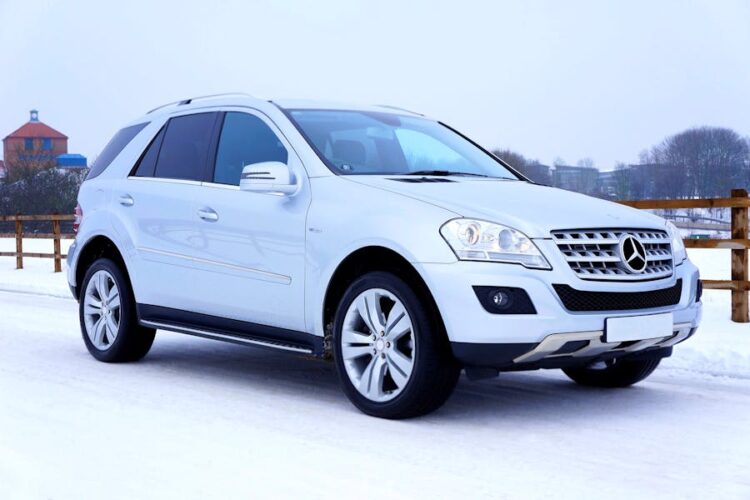Are you planning to buy a new car that can comfortably fit your family of five this year? Do you also want your new automobile to have the power to haul your camper trailer, skis, or boat? Most importantly, are you in the market for a new vehicle that can provide enough protection in a crash?
If you’ve nodded yes to one or all of those questions, consider buying a new SUV.
But what exactly makes a family SUV deserving of a spot in your garage? Is it worth the price, which, in 2023, averaged a little over $47,000?
Keep reading, as this guide provides insights into what makes an SUV ideal for you and your family.
More Room For People, Pets, And Cargo
There are four classes of SUVs based on their size: compact crossover, crossover, mid-size, and full-size. Compact crossover SUVs are the smallest, followed by crossovers, and so on. Five people (or large pets) can fit in the first two classes, seven in the mid-size, and, often, up to eight in the full-size.
Since compact crossovers are the smallest of the four classes, they offer the least cargo space. However, you can still fit more in them than in sedans.
If you and your family or friends usually go on camping or road trips and need more room for your stuff, a mid-size or full-size SUV may be a better option. Many of these larger vehicles offer over 100 cubic feet of cargo space.
Increased Engine Power
Because SUVs are larger and heavier than sedans, they also have more powerful engines. These allow them to tow loads of around 2,000 to 5,000 pounds, which isn’t as easy with smaller vehicles.
Some examples of SUVs with 5,000-pound towing capacities are the Ford Expedition, Toyota Highlander, and Volkswagen Atlas. With one of these, you can haul a modest camper trailer, a bass boat, or a couple of Jet Skis.
Can Provide More Protection Than Smaller Vehicles
While we hope you never get involved in a traffic incident, it pays to know that an SUV may protect you better than a sedan or a hatchback.
Typically, the larger and heavier a vehicle is, the more crash protection it provides than a smaller, lighter one. This is due to its bulkier, longer front section (the area between the front bumper and the passenger compartment). It absorbs more energy from the impact of a crash by crumpling.
Today’s SUVs also have more standard safety features, including the following:
- Rearview camera
- Rear-seat alert
- Driver-attention monitoring
- Adaptive cruise control
- Blind-spot monitoring with rear cross-traffic alert
- Forward collision warning with pedestrian and cyclist detection
- Forward automatic emergency braking
- Lane-departure warning with lane-keep assist
Those features are also available in new sedans but are typically “add-ons” that you pay extra for. By contrast, they’re often already standard in many SUVs, even in the base trims.
Robust Enough For Off-Roading
Sedans have lower ground clearance and typically smaller wheels than SUVs. As a result, they’re challenging to drive on rough roads and uneven terrain.
Conversely, SUVs have higher ground clearance, larger wheels, and a more robust suspension system. These features allow them to absorb the bumps and scuffs associated with rough or poor-conditioned roads.
So, you can expect an SUV to deliver a more comfortable off-road driving experience.
Some SUV models also have standard or optional 4×4 systems. If you like off-roading, get one of these, as they can handle rough terrain better. For example, they’re less likely to get stuck in a muddy field, while their higher ground clearance also reduces the risks of rocks scraping your ride’s underside.
Fuel-Efficient Options
One disadvantage of SUVs is they’re less fuel-efficient than their smaller, lighter counterparts. Since they’re larger and heavier, they use more fuel. While this still applies to today’s SUVs, they now have technologies that help them burn gas more efficiently.
What Does Fuel Efficiency Mean?
Fuel efficiency refers to how well a vehicle uses fuel. The more fuel-efficient it is, the better its fuel economy, meaning it can travel farther on a specific amount of fuel than a less efficient one.
In the U.S., miles per gallon (mpg) is the unit of measurement for a vehicle’s fuel economy. The higher the number that precedes “mpg,” the more miles it can travel on a single gallon of gas. For example, a vehicle with a 30 mpg rating is more efficient than one with a 25 mpg rating.
Why Fuel Efficiency Matters
Choosing the most fuel-efficient ride for your needs can save you a lot of your annual gas money. For example, the U.S. Department of Energy says it can save you $1,000 or more yearly. Without factoring in gas price spikes, that can sum up to $10,000 in savings if you keep driving the same car for ten years.
Driving a fuel-efficient vehicle also helps you become more eco-friendly. After all, the less petrol (a fossil fuel) you use, the lower your carbon footprint.
How SUVs Have Become More Fuel-Efficient
Many car makers now incorporate lightweight yet strong structural materials into their SUVs. These include high-strength steel, carbon fiber, and aluminum alloys, to name a few. They can reduce a vehicle’s body and chassis weight by as much as 50%.
Direct injection is another technology used in SUV engines that can help reduce fuel consumption. For the same reason, it also results in fewer emissions.
Last but not least, many SUVs are now available as hybrids or fully electric. Hybrid SUVs use both an internal combustion engine and an electric motor. All-electric ones rely solely on an electric motor, which owners can charge using solar energy.
Consider These Perks of Owning a New SUV
From having more space to offering more protection, robust handling, and a powerful engine, these are just some of the perks you can expect when you buy a new SUV. Don’t forget that today’s SUVs have become more fuel-efficient, so they can still help you save on fuel costs.
All that should be enough to make you consider buying a new SUV for your family this year.
Check out our recent posts for more of the latest news and informative guides like this!










